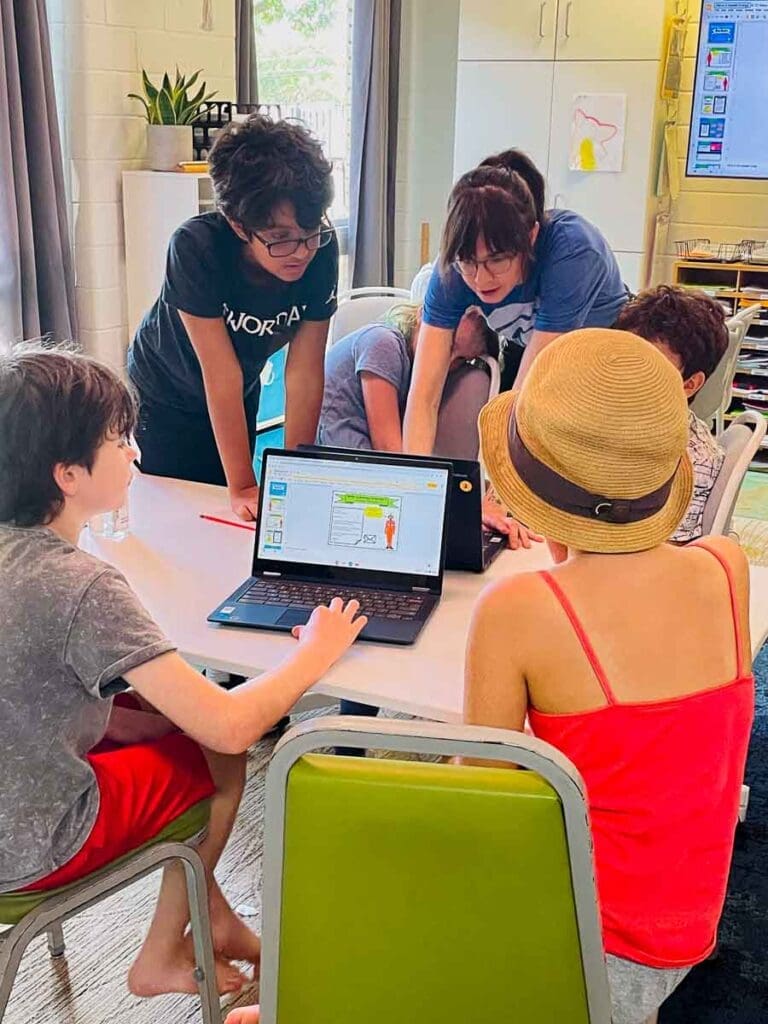SMALL CLASS SIZES
Students Love Learning When They Feel Valued
Small Classes, Big Benefits
A Sense of Belonging Supports Academic Success
At AHB, we’re committed to community. Our staff, teachers, parents and students get to know one another on a personal level, which strengthens the ties of our micro school and allows it to thrive.
Meaningful community bonds matter. Students at AHB are excited to share what they’ve learned and feel comfortable doing so, thanks in part to small class sizes. Lower student-teacher ratios are known to reduce bullying and empower students to participate, ask questions and share their knowledge. Fully engaged students and passionate teachers make for bustling, vibrant classroom cultures and days filled with critical thinking, connection, and the joy of discovery.
The increased engagement (or what researchers call “pro-social, learning behavior”) fostered by low student-teacher ratios has been proven to lead to higher academic performance that extends well into the upper grades. Small class sizes in the elementary years have even been linked to higher earning potential in adulthood. As a nonprofit private school we can focus on quality, and the benefits to students are truly exponential.


Fewer Students, More Possibilities
Project-Based Learning Thrives in Small Classes
Having a low student-teacher ratio allows teachers to provide authentic, highly individualized academic experiences. AHB teachers have the time and flexibility to meet students where they are. (This is one reason gifted learners thrive at AHB!) With no more than 11 students per teacher, both teachers and students can share their unique talents. With a cap of just 90 total students, our micro school provides families a dynamic alternative to traditional classroom models.
At AHB, academic cores are balanced with hands-on, project-based learning. Small class size makes this essential work possible, since teachers can group students based on ability for math and language arts and engage on a personal level with every student. Rather than sitting at individual desks, listening to lectures, and quietly filling out worksheets, our students enjoy authentic education.
Though AHB is a part-time school, smaller classes make engaged learning, while on campus, a full-time endeavor. Less students mean fewer distractions, more teacher attention, and greater inspiration—all of which makes our progressive micro school a harmonious and spirited place to learn, play, explore, create and grow.


